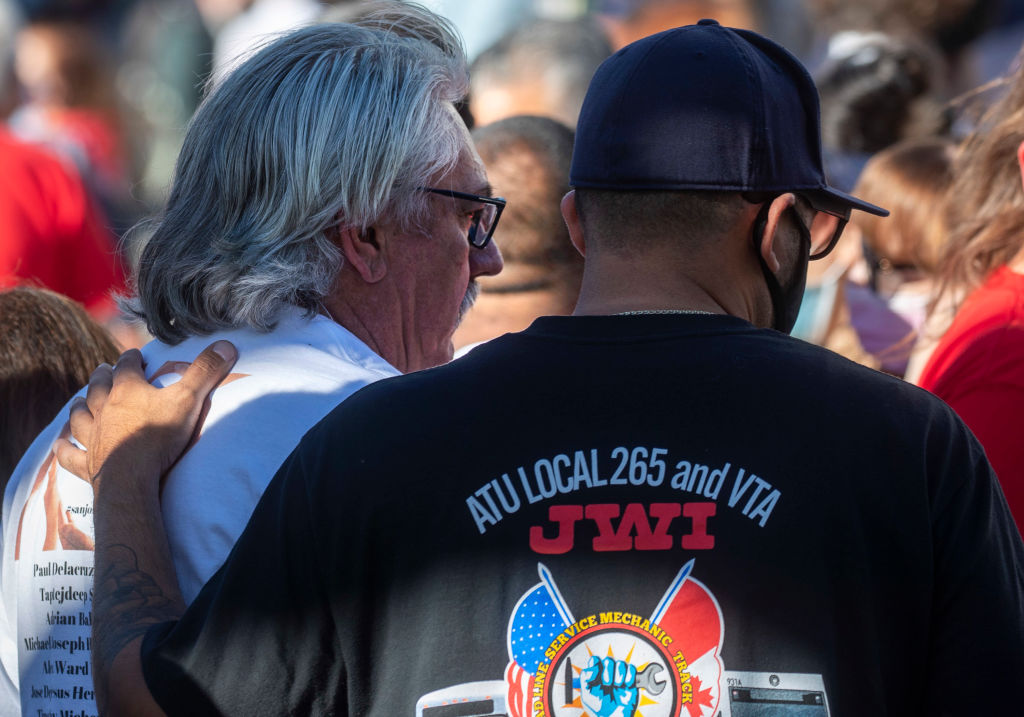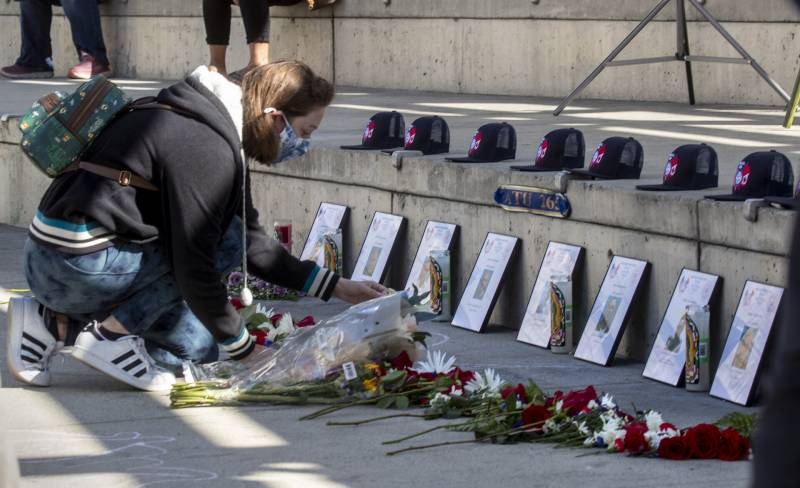John Courtney is still processing his day at work on May 26, 2021, when a gunman shot and killed nine of Courtney’s co-workers at a Valley Transportation Authority rail yard station in San José. The gunman, also a VTA employee, took his own life, too.
“The therapy that I’ve received, basically been diagnosed with severe PTSD, which leads to anxiety and depression. So I’ve been able to address [that] through many sessions with a therapist,” he said. “I’ve been able to come a long way and I don’t think I’m where I need to be just yet.”
The gunman had a history of disputes with co-workers, and the attack reignited debates over workplace safety. That issue resurfaced earlier this year after a mass shooting at two mushroom farms in Half Moon Bay.
Courtney, president of the Amalgamated Transit Union Local 265, which represents VTA workers, talked to KQED’s Brian Watt about the efforts made to prioritize workplace safety since the VTA shooting, one of the deadliest in Bay Area history.
This interview has been edited for brevity and clarity.
Brian Watt: So it seems daily that mass shootings take place in our country. How does it feel when you hear of one? Does it take you back to that day almost instantaneously?
John Courtney: It’s not an easy place to be, when I have to relive what we’ve all gone through.
What about just going to work? How safe have you felt at work since that tragedy that took the lives of nine of your co-workers?
Well, through a lot of therapy, I’ve come a long way, but there still is trepidation to actually even enter some places that I have to endure in regards to working and interfacing with our members.
How much of a priority has safety in the workplace become? What conversations are you having about this within the union?
We’ve been able to establish some procedures along the lines of safety, with the help of SB 129, a Senate bill pushed along by [state Sen. Dave Cortese]. You know, we don’t like to use the term “red flag” anymore, but we’ve been able to perhaps look at folks who may be struggling and maybe identify that they need help and offer them avenues of help. We never had that before. Now we have other resources available, including peer support, where our own union members have been trained to recognize some difficult situations that some of our members may be going through. And then in particular, in public transit, when you’re interfacing with the public, every time that door opens, every time you see someone new, it’s another situation and it’s constant. It never stops.

Do you feel like the VTA has done its part on this front?
We have a long way to go to actually get into what really is the root causes of some of the angst and some of what caused an individual to resort to what happened that day where that individual felt they had no other option. So I’m trying not to be critical of the agency. We have made strides, but there’s a long way to go.
A month after the shooting, San José became the first city in the nation to require gun owners to pay an annual fee and carry liability insurance. A statewide version of this is making its way through the Legislature. What do you make of these legislative actions?
I thought a lot about this, and I remember the day of the shooting. I spoke to Gov. Newsom in an impromptu conversation. And I wanted him to kind of focus on the families and the losses that we’ve suffered. And to me, those folks who lost their fathers, their uncles, their grandfathers, their sons, they don’t really care about the gun part or the mental health part. They just care about some way, somehow, something has to be done in our society. And if it is the guns, then we need to look at that. If it is the mental health piece, then we need to look at that.
We’re sort of in a week that just has a series of tragic anniversaries in it. If you think about Uvalde and then VTA, different years, but in the same stretch of days, how much as a society have we become callous to the kind of suffering that you witnessed two years ago today?
You’re spot-on when you say we’ve become callous to this. For whatever reason, we’ve almost accepted that it’s going to happen. It’s just a matter of when and where, and we’re hoping that we’re not part of it. I’m disgusted by it. But I understand it because it’s a very hard thing to look at.

